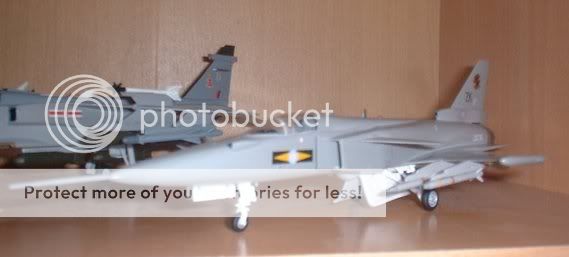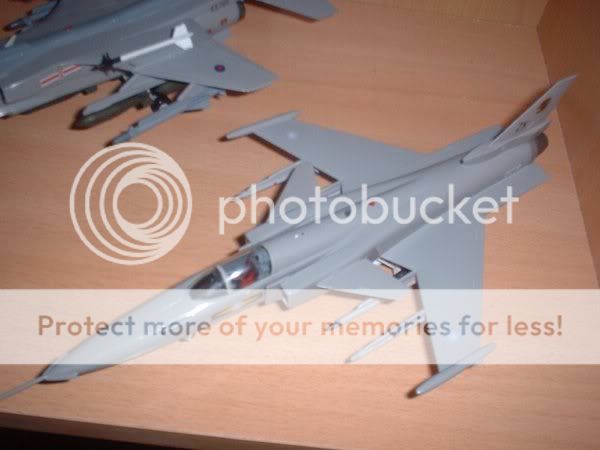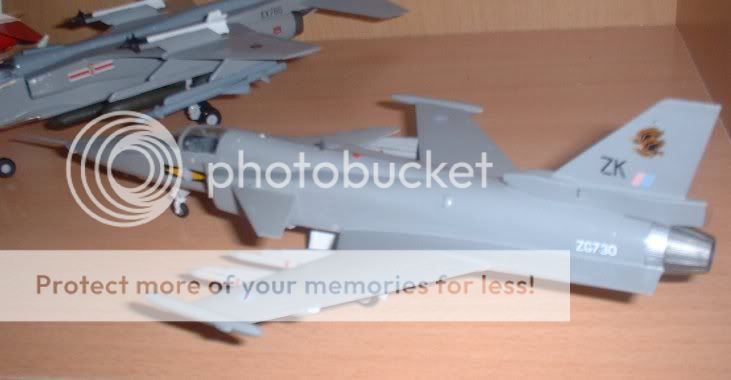It looks like you're using an Ad Blocker.
Please white-list or disable AboveTopSecret.com in your ad-blocking tool.
Thank you.
Some features of ATS will be disabled while you continue to use an ad-blocker.
share:
Definately a cool concept.
I managed to dig up a sketch for the Convair XB-53 which was apparently based on Nazi designs captured post-WWII. The FSW double as rear horizontal stabilisers and I assume the FSW was chosen in this case to enable an unrestricted bomb bay.
Convair XB-53
Also here is a prototype for the X-1 with FSW discussed earlier:
Bell X-1 FSW
I managed to dig up a sketch for the Convair XB-53 which was apparently based on Nazi designs captured post-WWII. The FSW double as rear horizontal stabilisers and I assume the FSW was chosen in this case to enable an unrestricted bomb bay.
Convair XB-53
Also here is a prototype for the X-1 with FSW discussed earlier:
Bell X-1 FSW
found this picture of the P1214 that you might like too, it shows the layout better than the painting I posted before;


WOW .... it really struck me when you posted those plans of the P.1214-3 just how much of a similar shape it actually is to the Su-47, sure the
underneath is a little different but from directly above they are almost identical. Check these
plans for the Su-47. With the backward swept x-wings being shortened into the
rear horizontal stablisers. And obviously no canards which might have destabilsed the P.1214-3, its a real shame they never pursued this design!!
I forgot to add, although the X-29 was never meant to result in an operational fighter, that didn't stop me dreaming up the Northrop Grumman F-29K
Tigerbat






Originally posted by planeman
The type did see combat in Nigeria where it was used by mercenaries and destroyed a number of Nigerian fast jets, but obviously lacks the appeal of the Su-47.
www.eichhorn.ws...
Please explain how this defeated a number of fast jets?
Really nice model Waynos.
Originally posted by waynos
I forgot to add, although the X-29 was never meant to result in an operational fighter, that didn't stop me dreaming up the Northrop Grumman F-29K Tigerbat
I can't help but feel that the canards would hit the pylons lol anyways its really neat to see a fellow modeler and a "F-29K"
Nah, there's plenty of clearance, I rotated them to make sure That was actually why I changed them from the X-29's lower mounting. the weapons
and canard layout are based on a Rockwell impression from 1978 showing their 'Sabrebat' design splashing a MiG 21.
Wierd, seeing my model brought up again after so long

Wierd, seeing my model brought up again after so long

I can't help but feel like the back of the 29 looks like a viggen or gripen to me. Anyone else? maybe an f-16?
I'd say a Gripen, yes. Ans also an F-20. But thats probably because it uses the same engine, so its bound to.
reply to post by The_Time_is_now
Of course, had their been more time, there would have been a forward swept wing version of the He-162.
Of course, had their been more time, there would have been a forward swept wing version of the He-162.
Originally posted by kilcoo316
Originally posted by Figher Master FIN
What is it then that make some of the designs so unstable... Is there something wrong with the pressure and weight...
As for bomb planes that use FSW... The center of weight changes when the bombs are dropped...
……
Aircraft like the F-16 (ok, i think the original model may have been pure unstable), but all after that have reduced static margin - they are stable - just, but they have good control responses. Same for Airbus's 777 etc, reduced static margin, but not really for manoverability, more to reduce trim drag.
The EF-2000, Rafale and Gipen are all unstable (i.e. have a negative static margin = the aerodynamic centre of pressure is ahead of the aircraft centre of gravity) - this means they will automatically tend to pitch up, which gives extreme manouverability, but would be impossible for a pilot to handle - thus flight computers are used.
Sorry, if I comprehansion is correct, then I think only Eurofighter is unstable jet but Rafale, because all video I watched in which Rafale's foreplan deflected down during subsonic flight because the CoL will moving backward while jet flight within supersonic. So if Rafale is an unstable jet, mo matter supersonic or subsonic Rafale flew, the foreplan won't deflect down.
My opnion is that CoG on Rafale was originally setted behind the CoL, this design if I call it rightly is you named stable cause canards deflect down.
Same phenomenon didn't show on Eurofighter wheare Gripen is same as Rafale.
very funny, could this be advantage of FSW?
may be I understand it wrongly because my native language is not English.
[edit on 31-8-2008 by emile]
since the airflow on a swept wing can be decomposed in a chordwise and a spanwise flows, the spanwise flow of a swept forward wing is directed towards the fuselage that act up like a wing shutting down plate
may be I understand it wrongly because my native language is not English.
[edit on 31-8-2008 by emile]
Originally posted by emile
very funny, could this be advantage of FSW?
Its well understood that that is the basic advantage of FSW.
Let me guess.
maybe sth showed wrongly to me.
In that express, "act up" could be "act upon", but to be wrong still. that should be "act on", which means affect or operate or do an action.
But that "shutting down plate" reeealy made me fall in confusion. Does it mean air brake? or sth else, please explain.
maybe sth showed wrongly to me.
In that express, "act up" could be "act upon", but to be wrong still. that should be "act on", which means affect or operate or do an action.
But that "shutting down plate" reeealy made me fall in confusion. Does it mean air brake? or sth else, please explain.
Thanks for your help, but let's go more advanced.
Yes, the picture you posted show a good advantage that FSW given, but consider the boundary layer FSW guided also will congregate towards fuselage, which cause enlarge drag quickly and increasingly. Thus, totally cancel out the efficiency the aileron brought to.
Furthermore, BSW only has one shock wave while it flight from transonic in to supersonic, but FSW will get three shock wave. The shock wave also is a sort of drag that supersonic fighter really want to avert or delay.
Yes, the picture you posted show a good advantage that FSW given, but consider the boundary layer FSW guided also will congregate towards fuselage, which cause enlarge drag quickly and increasingly. Thus, totally cancel out the efficiency the aileron brought to.
Furthermore, BSW only has one shock wave while it flight from transonic in to supersonic, but FSW will get three shock wave. The shock wave also is a sort of drag that supersonic fighter really want to avert or delay.
Originally posted by emile
But consider the boundary layer FSW guided also will congregate towards fuselage, which cause enlarge drag quickly and increasingly.
The horseshoe vortex at the wing root will destroy the boundary layer for both RSW and FSW designs.
The wing tip vortex on a RSW also affects the bound vortex - it reduces the effective angle of attack as you move towards the wingtip - losing lift.
For a FSW, this is semi-reversed, and the effective angle of attack of the wing towards the root is increased. Leading to an increase of lift.
Sure, you can twist the RSW to compensate, but that only works over a narrow range of AoA.
Originally posted by emile
Furthermore, BSW only has one shock wave while it flight from transonic in to supersonic, but FSW will get three shock wave. The shock wave also is a sort of drag that supersonic fighter really want to avert or delay.
3?
new topics
-
Any one suspicious of fever promotions events, major investor Goldman Sachs card only.
The Gray Area: 1 hours ago -
God's Righteousness is Greater than Our Wrath
Religion, Faith, And Theology: 6 hours ago -
Electrical tricks for saving money
Education and Media: 9 hours ago -
VP's Secret Service agent brawls with other agents at Andrews
Mainstream News: 10 hours ago -
Sunak spinning the sickness figures
Other Current Events: 11 hours ago -
Nearly 70% Of Americans Want Talks To End War In Ukraine
Political Issues: 11 hours ago
top topics
-
VP's Secret Service agent brawls with other agents at Andrews
Mainstream News: 10 hours ago, 9 flags -
Cats Used as Live Bait to Train Ferocious Pitbulls in Illegal NYC Dogfighting
Social Issues and Civil Unrest: 14 hours ago, 8 flags -
Electrical tricks for saving money
Education and Media: 9 hours ago, 4 flags -
Nearly 70% Of Americans Want Talks To End War In Ukraine
Political Issues: 11 hours ago, 3 flags -
Sunak spinning the sickness figures
Other Current Events: 11 hours ago, 3 flags -
Late Night with the Devil - a really good unusual modern horror film.
Movies: 13 hours ago, 2 flags -
Any one suspicious of fever promotions events, major investor Goldman Sachs card only.
The Gray Area: 1 hours ago, 2 flags -
The Good News According to Jesus - Episode 1
Religion, Faith, And Theology: 16 hours ago, 1 flags -
God's Righteousness is Greater than Our Wrath
Religion, Faith, And Theology: 6 hours ago, 0 flags
active topics
-
Nearly 70% Of Americans Want Talks To End War In Ukraine
Political Issues • 21 • : FlyersFan -
God's Righteousness is Greater than Our Wrath
Religion, Faith, And Theology • 13 • : andy06shake -
-@TH3WH17ERABB17- -Q- ---TIME TO SHOW THE WORLD--- -Part- --44--
Dissecting Disinformation • 662 • : F2d5thCavv2 -
SETI chief says US has no evidence for alien technology. 'And we never have'
Aliens and UFOs • 61 • : andy06shake -
The Reality of the Laser
Military Projects • 47 • : F2d5thCavv2 -
Definitive 9.11 Pentagon EVIDENCE.
9/11 Conspiracies • 423 • : Lazy88 -
Election Year 2024 - Interesting Election-Related Tidbits as They Happen.
2024 Elections • 73 • : Threadbarer -
Sunak spinning the sickness figures
Other Current Events • 8 • : McUrnsalso -
HORRIBLE !! Russian Soldier Drinking Own Urine To Survive In Battle
World War Three • 36 • : TheMisguidedAngel -
British TV Presenter Refuses To Use Guest's Preferred Pronouns
Education and Media • 146 • : Consvoli


